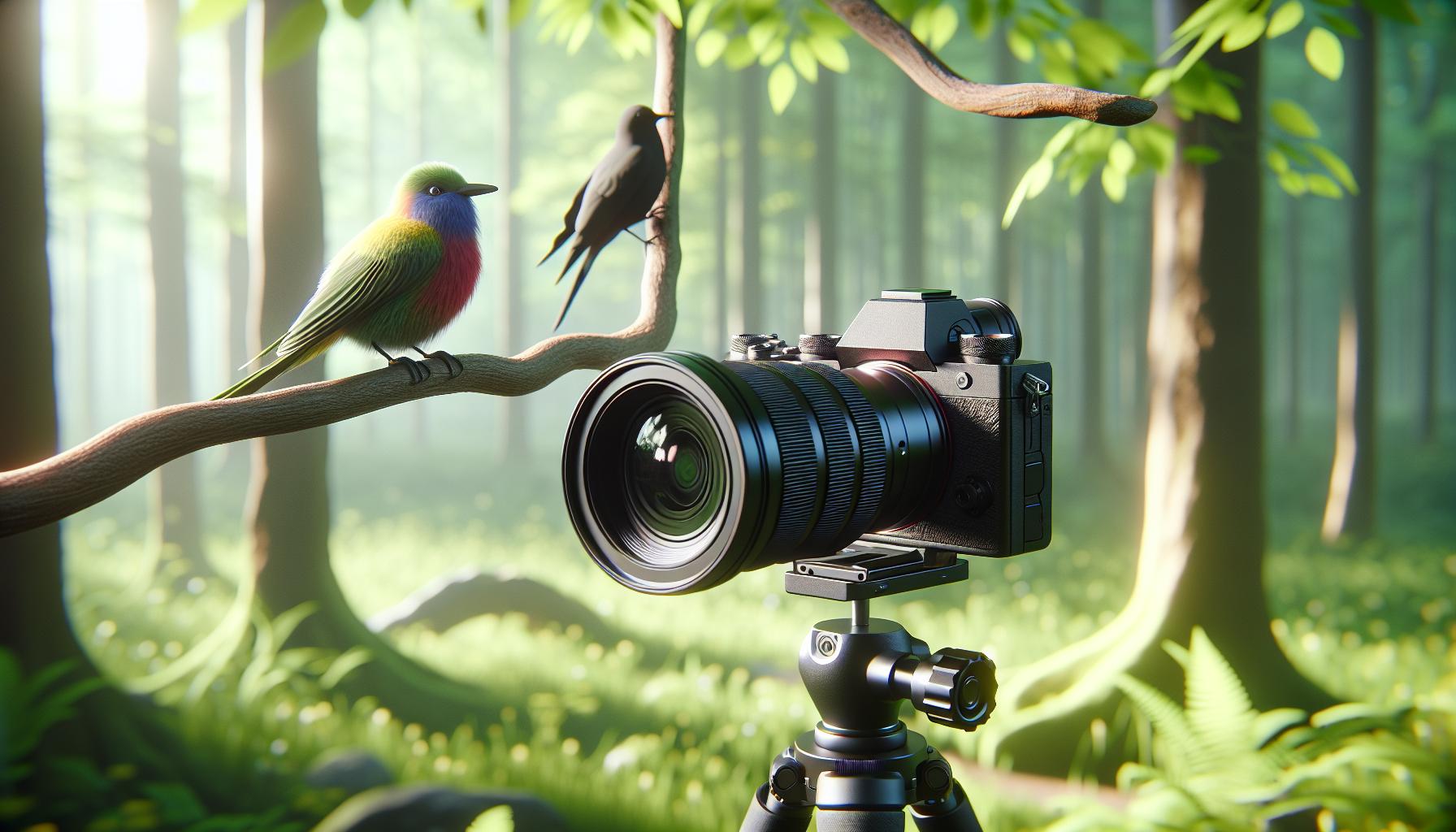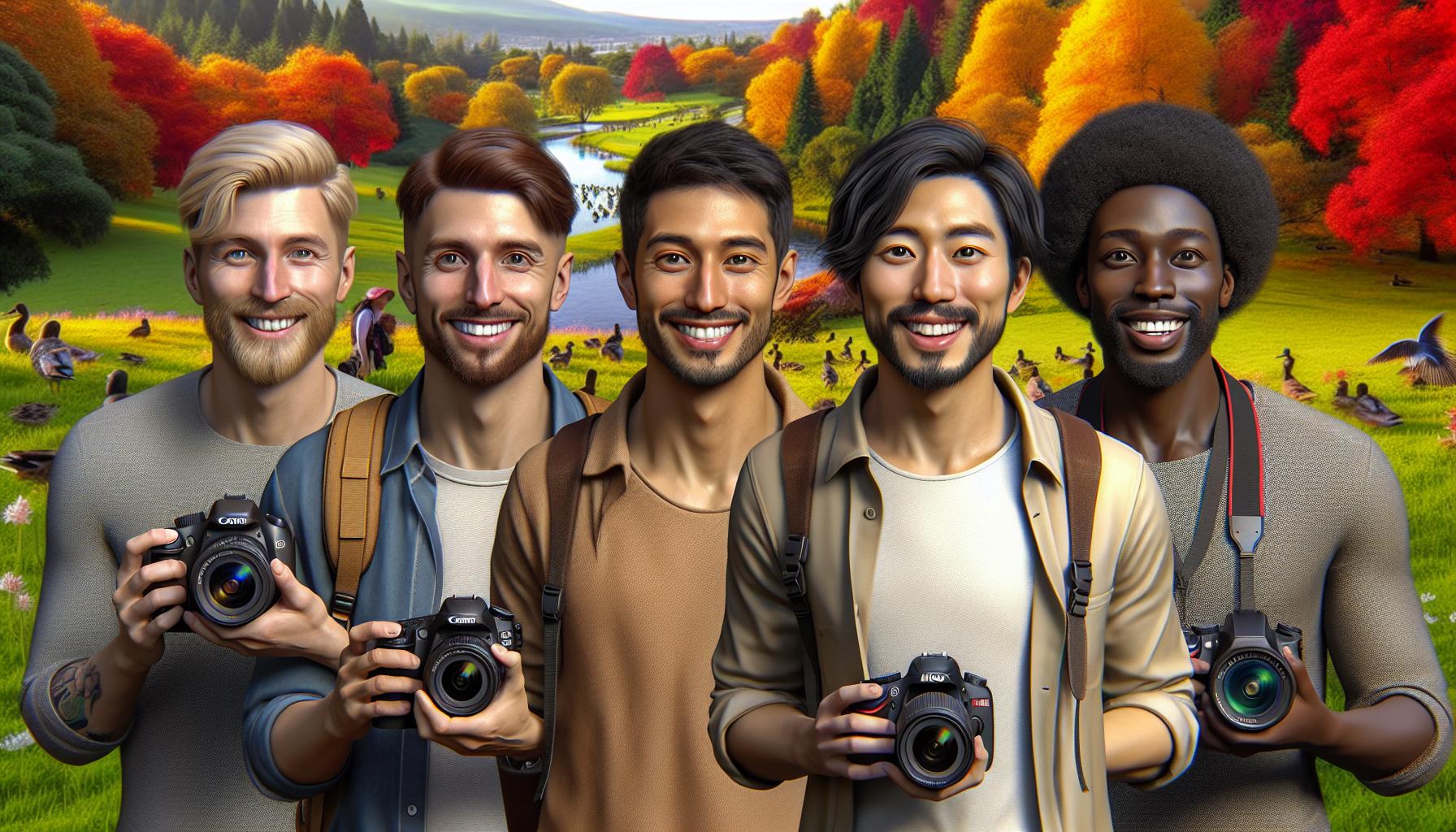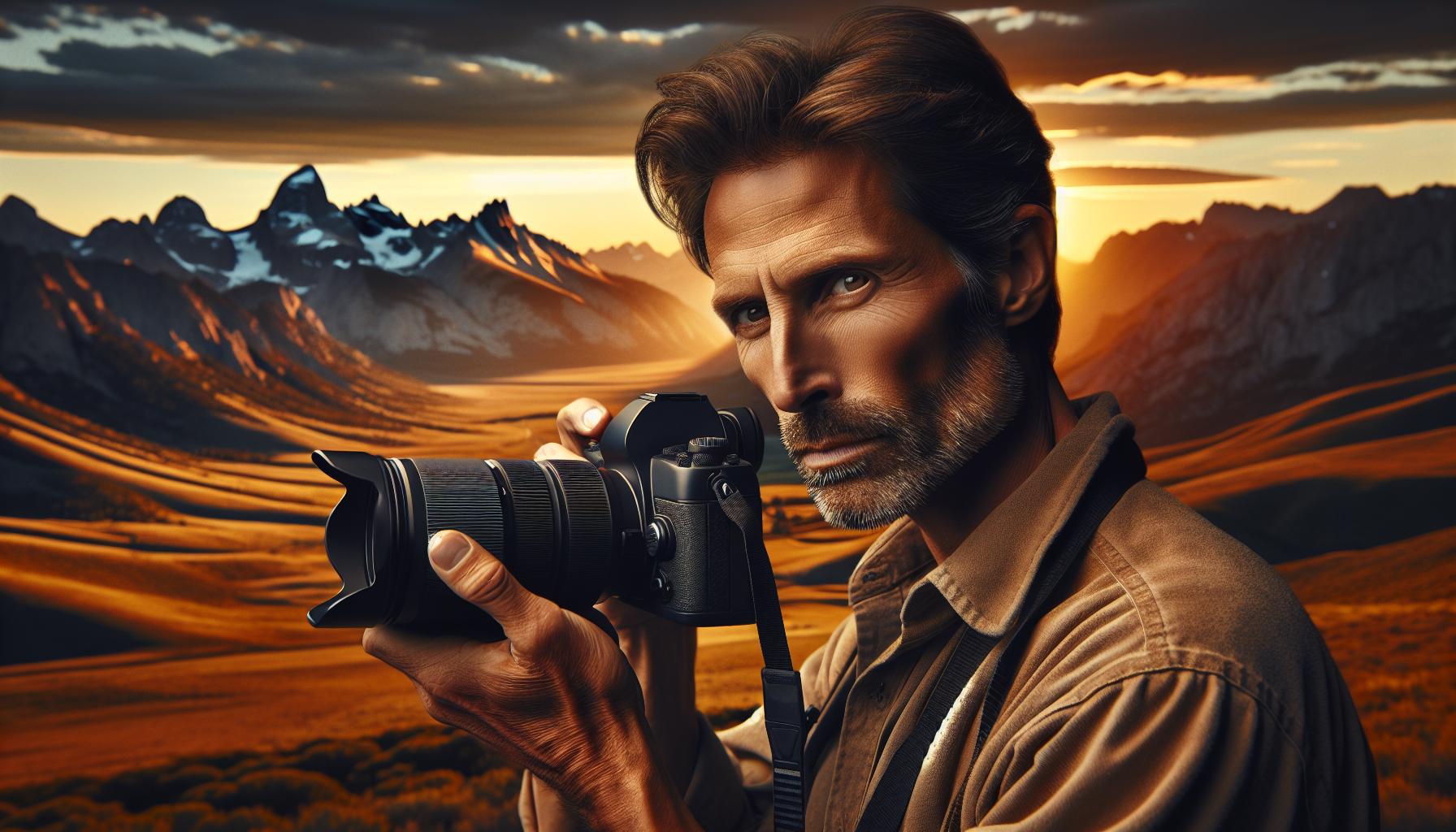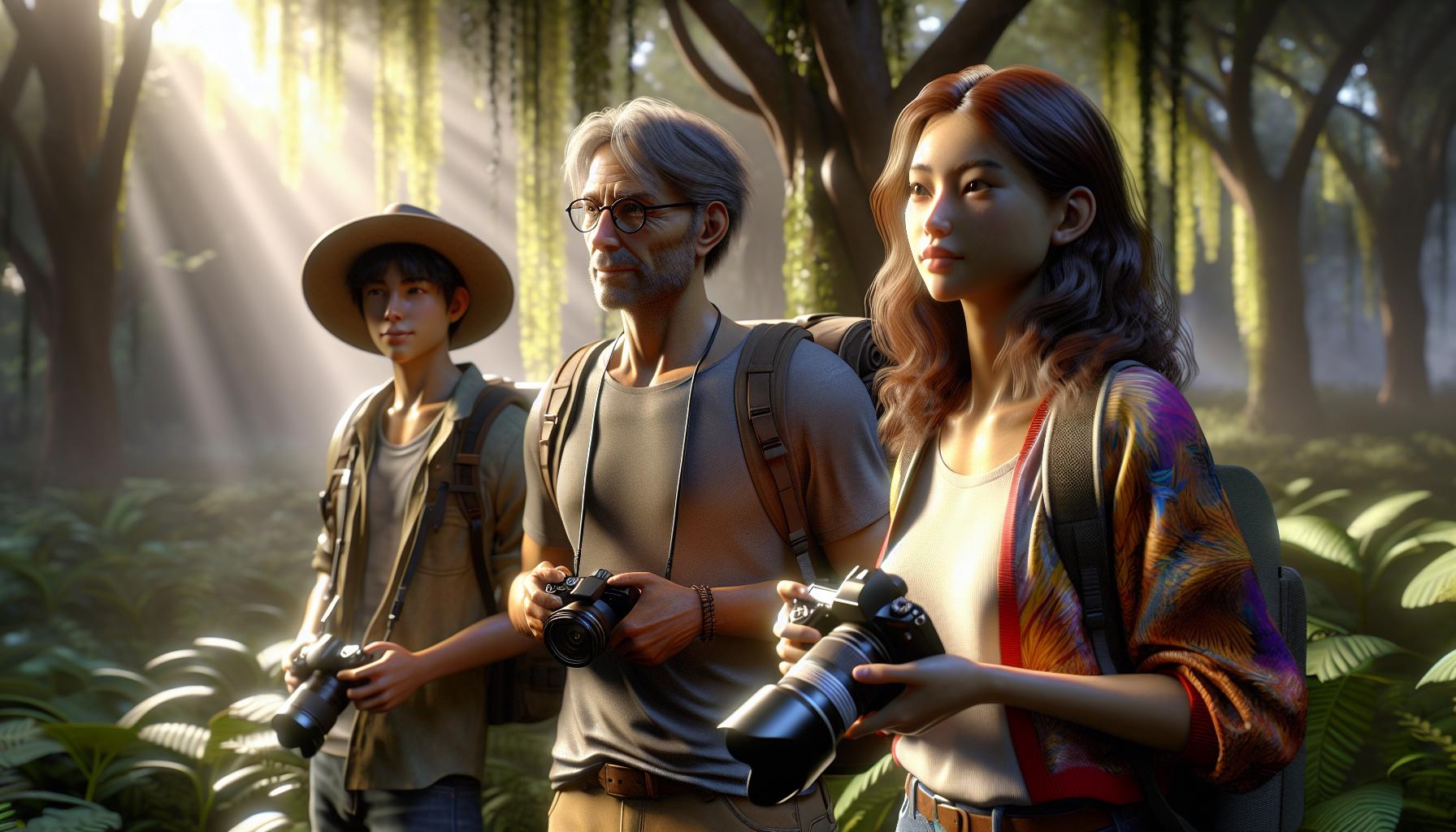Diving into photography can feel like entering a maze of technical jargon and endless equipment options. From DSLRs to mirrorless cameras the choices might leave you scratching your head wondering which camera will help capture those perfect moments.
Whether you’re a budding photographer looking to upgrade from smartphone snaps or an enthusiast ready to take your craft to the next level there’s a perfect camera waiting to be discovered. Today’s market offers incredible options that combine cutting-edge technology with user-friendly features making it easier than ever to start your photography journey.
What are Good Cameras for Photography
Photography enthusiasts match different camera types to their specific shooting requirements. Each category offers distinct advantages for various photographic situations.
DSLR Cameras
DSLR cameras incorporate a mirror mechanism that reflects light from the lens to the optical viewfinder. Professional photographers choose DSLRs for their extensive lens compatibility with both modern and vintage options. These cameras excel in action photography, capturing moving subjects at 12 frames per second with advanced autofocus systems. The optical viewfinder provides a clear view of subjects without digital lag, making DSLRs ideal for sports or wildlife photography. Battery life extends to 1,500+ shots per charge, enabling extended shooting sessions.
Mirrorless Cameras
Mirrorless cameras eliminate the mirror mechanism found in DSLRs, reducing camera size by 40%. Electronic viewfinders display real-time exposure adjustments, helping photographers perfect their shots before pressing the shutter. Modern mirrorless cameras feature enhanced autofocus systems covering 90% of the frame with up to 700 focus points. These cameras excel in video production, offering 4K recording at 60 frames per second. The compact design makes mirrorless cameras ideal for travel photography or street shooting.
Point-and-Shoot Cameras
Point-and-shoot cameras combine compact design with automated settings for simplified operation. These cameras feature built-in zoom lenses ranging from 24-70mm to 24-200mm focal lengths. Advanced models include 1-inch sensors capturing 20-megapixel images with improved low-light performance. Automated scene recognition adjusts camera settings for optimal results across 10+ shooting scenarios. The pocket-sized design suits casual photographers seeking quality images without carrying multiple lenses or additional equipment.
Key Features to Look for in a Photography Camera

A camera’s technical specifications determine image quality performance. Understanding these key features helps photographers select equipment that matches their creative vision.
Sensor Size and Resolution
Camera sensors capture light through millions of light-sensitive pixels. Full-frame sensors (36 x 24mm) deliver superior image quality with enhanced dynamic range detail capture. APS-C sensors (23.6 x 15.7mm) offer a crop factor that extends telephoto reach, beneficial for wildlife photography. Megapixel count impacts print size capabilities – 24MP enables sharp 20×30 inch prints while 45MP allows for extensive cropping flexibility. The pixel density relative to sensor size affects low-light performance high ISO noise levels.
Autofocus Capabilities
Modern cameras feature hybrid autofocus systems combining phase-detection contrast-detection methods. Advanced models include up to 693 focus points covering 93% of the frame. Eye AF technology tracks subjects’ eyes maintaining sharp portraits even with movement. Sports photographers benefit from continuous autofocus speeds reaching 20 frames per second. Zone AF modes enable precise focus on specific frame areas while subject tracking algorithms predict movement paths.
Low Light Performance
ISO sensitivity determines a camera’s ability to capture images in dim conditions. Professional cameras achieve clean images at ISO 6400 enabling handheld shooting in twilight. Larger photosites on full-frame sensors gather more light reducing digital noise at high ISOs. Dual native ISO technology preserves dynamic range when shooting at elevated sensitivities. Advanced noise reduction processing maintains color accuracy shadow detail in challenging lighting scenarios.
Best Entry-Level Cameras for Beginners

Entry-level cameras combine essential features with intuitive controls, creating an ideal starting point for photography enthusiasts. These cameras offer a balance of quality, functionality, and affordability for newcomers transitioning from smartphone photography.
Budget-Friendly Options
The Canon EOS Rebel T7 stands out at $449, featuring an APS-C sensor and 24.1MP resolution. The Nikon D3500 offers remarkable value at $496, including an 18-55mm kit lens and 24.2MP sensor. Sony’s Alpha a6000 leads the mirrorless category at $548, delivering 24.3MP resolution and fast autofocus performance.
| Camera Model | Price | Resolution | Key Feature |
|---|---|---|---|
| Canon EOS Rebel T7 | $449 | 24.1MP | Built-in WiFi |
| Nikon D3500 | $496 | 24.2MP | 11-point AF |
| Sony Alpha a6000 | $548 | 24.3MP | 179 AF points |
User-Friendly Features
Modern entry-level cameras incorporate guided shooting modes that explain camera settings in real-time. The Nikon D3500 includes an interactive Guide Mode displaying optimal settings for specific scenes. Canon’s Creative Auto mode enables background blur adjustments through simple slider controls. Auto ISO settings maintain proper exposure across lighting conditions, while built-in image stabilization reduces motion blur in handheld shots. Face detection technology ensures sharp portraits, tracking up to 10 faces simultaneously. WiFi connectivity enables instant image sharing through smartphone apps, streamlining the photo transfer process.
Professional-Grade Cameras for Advanced Users

Professional photography demands exceptional image quality precision controls reliable performance. Advanced photographers seeking top-tier equipment find these cameras essential for capturing premium-quality images in challenging situations.
Full-Frame Options
Full-frame cameras deliver superior low-light performance expanded dynamic range exceptional detail retention. The Sony A7R V offers 61MP resolution with advanced AI-based autofocus. Canon’s EOS R5 combines 45MP resolution with 8K video capabilities. Nikon Z9 excels in speed capturing 45.7MP images at 20 fps. The Panasonic Lumix S1R features a high-resolution mode producing 187MP images. These cameras include professional features:
- Dual memory card slots for backup redundancy
- Weather-sealed construction for outdoor durability
- Advanced subject tracking with eye detection
- Extended battery life for prolonged shooting sessions
- 14+ stops of dynamic range
- Enhanced color reproduction with 16-bit processing
- Superior tonal gradations in landscape photography
- Minimal digital noise at high ISOs
- Increased depth of field control
- Advanced leaf shutter systems for flash synchronization
| Camera Model | Sensor Size (MP) | Max ISO | Dynamic Range (stops) |
|---|---|---|---|
| Fujifilm GFX 100S | 102 | 12800 | 14.7 |
| Hasselblad X2D | 100 | 25600 | 15 |
| Phase One IQ4 | 150 | 51200 | 15.3 |
Essential Accessories to Enhance Your Photography
Photography accessories complement camera functionality with specialized tools for diverse shooting conditions. A sturdy tripod provides stability for long exposures during night photography, landscape shots or low-light situations. Camera bags protect equipment while offering organized storage compartments for lenses, filters accessories.
Memory cards form the foundation of digital image storage:
- SD Cards: Up to 2TB storage capacity with UHS-II speeds
- CF Express: Read speeds reaching 1700MB/s
- XQD Cards: Sustained write speeds of 400MB/s
Lens filters enhance image quality in various conditions:
- Polarizing filters: Reduce glare enhance color saturation
- ND filters: Control exposure in bright conditions
- UV filters: Protect lens surfaces from scratches dust
| Accessory Type | Essential Features | Typical Price Range |
|---|---|---|
| Tripod | Carbon fiber, ball head | $150-500 |
| Camera Bag | Weather-resistant, padded | $80-300 |
| Memory Cards | High-speed, reliable | $30-200 |
| Lens Filters | Multi-coated, durable | $20-150 |
External flashes expand lighting possibilities:
- TTL compatibility for automatic exposure
- Wireless triggering capabilities
- Adjustable power output settings
- Bounce flash functionality
Battery grips extend shooting time through:
- Additional battery capacity
- Vertical shooting controls
- Enhanced camera balance
- Extended recording times
Cleaning equipment maintains optimal performance:
- Sensor cleaning kits
- Lens cleaning solutions
- Microfiber cloths
- Air blowers
These accessories integrate seamlessly with previously discussed camera options while expanding creative possibilities technical capabilities.
Price Range and Value Considerations
Photography cameras span distinct price brackets, each offering specific features aligned with different skill levels. Entry-level DSLRs range from $400 to $800, featuring basic manual controls suitable for beginners. Mid-range cameras cost between $800 to $2,000, incorporating advanced autofocus systems, improved sensors, and weather sealing.
Professional-grade cameras command prices from $2,000 to $6,500, delivering superior image quality through full-frame sensors, enhanced low-light performance, and dual card slots. Premium flagship models exceed $6,500, featuring cutting-edge technology like 8K video recording, advanced stabilization systems, and professional-grade weather sealing.
| Camera Category | Price Range | Key Features |
|---|---|---|
| Entry-Level | $400-$800 | Basic manual controls, APS-C sensors |
| Mid-Range | $800-$2,000 | Weather sealing, advanced AF |
| Professional | $2,000-$6,500 | Full-frame sensors, dual card slots |
| Premium | $6,500+ | 8K video, pro weather sealing |
Long-term value depends on specific photography requirements. Entry-level cameras provide excellent learning platforms for beginners exploring manual controls. Mid-range options balance advanced features with affordability for enthusiast photographers. Professional models offer durability, reliability, and image quality suited for commercial work.
Additional costs include lenses, memory cards, and essential accessories. A basic lens kit adds $200 to $500 to the initial investment. Professional lenses range from $1,000 to $3,000 per lens. Storage solutions require $50 to $200 for high-capacity memory cards, while protective cases add $50 to $150 to the total cost.
Finding the perfect camera requires careful consideration of personal needs skill level and budget. Whether it’s a user-friendly DSLR for beginners or a professional-grade mirrorless camera for advanced photographers there’s an ideal match for everyone.
The photography world continues to evolve with innovative features and technologies that make capturing extraordinary moments more accessible than ever. By understanding the essential features matching them with photography goals and considering long-term value photographers can make informed decisions that enhance their creative journey.
Remember that the best camera isn’t necessarily the most expensive one – it’s the one that fits individual needs and helps capture those perfect moments with confidence.

